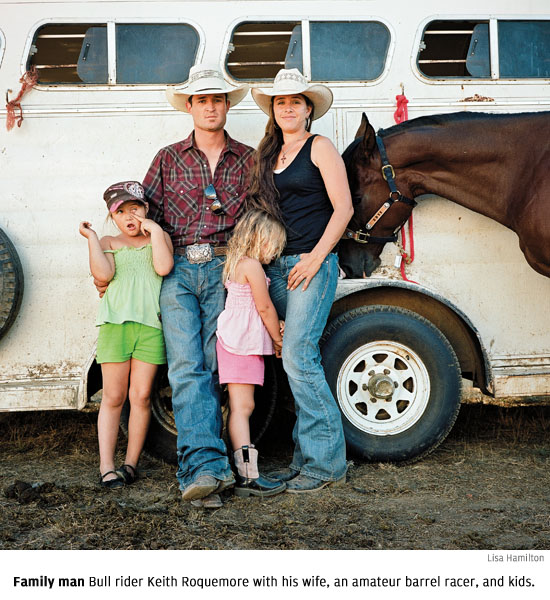
In March 2011, Lisa M. Hamilton, a writer and photographer, began a series of road trips around rural California. She had a grant from the Creative Work Fund—a San Francisco-based foundation that supports collaboration between artists and nonprofits—to tell stories that would help bridge the cultural divide between the rural and urban parts of the state. Initially she wanted to address issues relating to the health of rural communities in the state. But as Hamilton started logging miles (nearly 10,000 total by the time she finished in December) and searching for the stories that would illuminate those issues in different ways, she began to understand that she needed to back up and tell a much more fundamental story.
LH: When I would tell friends and colleagues that I was doing a project about rural California, they’d say, ‘Oh, the Central Valley,’ meaning the stretch of high-production farmland along the interstate between San Francisco and LA. It’s just one of dozens of regions within the state’s non-urban areas, but that’s all they knew of rural California. And within that landscape they were thinking of just two kinds of people: the big agribusiness titan and the anonymous farm worker. I realized I had to go back a step and simply introduce people to rural California. Before I could start talking about peoples’ complicated relationships to, say, water, I had to first establish that there are all kinds of different people in the state who have all kinds of different relationships to water. And I needed to do it using the language of stories, not the language of issues.
Hamilton brought her infant daughter, Ada, with her on the reporting trips. Having Ada along changed the way Hamilton worked, and helped her capture the nuance and subtlety in the stories she found.
LH: I remember reading an obit for John Updike in which someone described him as a traveler and a witness. I thought about the difference in those two states of observing. The traveler is the one who eats up the world and wants to get her hands on everything and go as far as possible; the witness is the one who sits there and watches the same thing for hours, and tries to understand it deeply and intimately. As a photographer, I had always been strictly a traveler—I would get in the car in the morning and drive until I couldn’t feel my legs, then stop at the closest hotel, sleep for eight hours, and get up and do it again.
Having a baby with me meant I couldn’t do that. Instead, I had to schedule interviews in advance, which often meant arriving to find that the person in front of me was not some amazing visual spectacle, but rather a boring-looking person in a boring-looking place. So I was challenged to be a witness; I had to sit with that person and try to understand him or her, and get the person to trust me and let me in enough to photograph in a way that tells more of a story than that initial boring appearance can tell. It changed the way I photograph. Before, I didn’t photograph people often. When you’re wandering, you don’t have time to sit down and listen for hours before you make a photograph. But by taking the time to be a witness, the portrait becomes a much richer story.
This is evident in the photograph of Keith Roquemore, a professional bull rider, his wife Ileah, and their two daughters.
LH: My early photos of Keith were just photos of a guy who’s a bull rider. It wasn’t until I understood that the crux of his experience, the challenge he was trying to figure out, was how could he be a great rodeo bull rider and a good father and husband. Those two things are almost contradictory by nature. For me, in this photo you see that complex story. I can see in his face a lot of conflict about who he is.
It was at this dinky little county fair rodeo, and he had just tried to ride a bull and got thrown off. Now, he’s not just some average bull rider. He made it to the PBR [Professional Bull Riding] finals in 2005; he’s really good, and has a shot at being very successful. But here he is, just having been thrown at this crappy little country fair, beaten, actually, by the boy who won the high school rodeo championship the year before. So, you know, he’s got this 19-year-old on his tail. At the same time, he’s trying to watch after his daughters. His wife, Ileah, also competed in the rodeo—she’s an amateur barrel racer—but you can see in her face that it’s a lot less complicated for her. She wants to smile for the camera, whereas Keith is sort of working it out every minute of every day. It took a lot of time spent not photographing, just listening to him, to get there.
Hamilton’s project is at www.realrural.org.
The Editors are the staffers of the Columbia Journalism Review.
